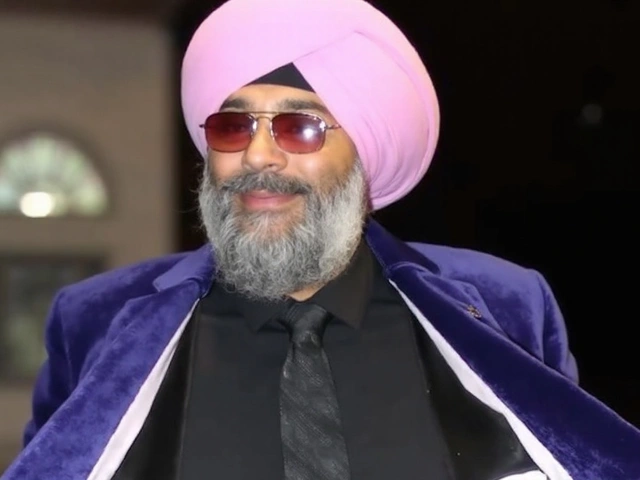Bronson Reed has made peace with a harsh reality: his right foot will never move the way it once did. The WWE powerhouse says his “new 100%” is about 75% of normal after he shattered the talus bone during Survivor Series: WarGames 2024, a split-second miss that turned a signature moment into a permanent injury. He spent half a year rebuilding his leg, then returned in June 2025 as part of the Vision faction—still hurting in daily life, somehow free in the ring.
“My mobility in this foot will never be complete again. My new 100% is 75% of normal mobility,” Reed said on the WWE Raw Recap podcast, laying out what doctors told him and what his body keeps reminding him of every morning.
A split-second fall that changed a career
WarGames is controlled chaos—two rings, towering cage, bodies everywhere, and one decision that can rewrite a career. For Reed, it was the Tsunami from the top of the cage. As he launched, CM Punk moved Roman Reigns out of the landing zone. Reed crashed through a table instead. In his words, the talus “was broken in two,” the bone “separated and went apart.”
The talus sits between the shin and the heel, steering the ankle joint. It doesn’t get much blood flow, which is why a severe fracture is so unforgiving. Orthopedic surgeons warn about slow healing, stiffness, and a real risk of avascular necrosis—where part of the bone essentially dies from lack of blood supply. It’s the sort of injury that can end a power athlete’s explosiveness, or end a career outright.
Reed’s road back was slow by design. He spent three months with his foot elevated—no weight, no shortcuts. That much rest takes a toll. “I had to build all my muscle back up in this right leg, had to learn to walk again on this right leg, then learn to run, then learn to jump, and then eventually get in a ring and do everything we do,” he said.
That sequence tracks with how ankle rehab usually goes: swelling down first, then gentle motion, then partial weight-bearing, then strength and balance. Trainers often lean on pool work or anti-gravity treadmills to reduce impact while restoring gait. By the time an athlete adds sprinting, cutting, and jumping, they’ve repeated the basics hundreds of times. Reed’s timetable—six months from catastrophic break to ring-ready—is fast for the injury he described, and it underlines how much time he poured into the fundamentals.
Even now, he doesn’t pretend daily life is comfortable. “Everyday life, walking around, running, doing those things, it’s painful,” he said. The weird twist? “When I get in that ring, I forget it. For some reason, the doctors noticed that when I’m in the ring, I can do anything.” That’s part adrenaline, part focus, and part muscle memory—common for athletes who report pain spikes after games more than during them.
Life after the fracture: how Reed works around pain
Reed tapes the ankle and relies on supportive boots, which do two jobs: lock the joint into a safer range and remind the brain to respect the limits. The big adjustment is range of motion. Less dorsiflexion and plantarflexion means takeoffs and landings feel different. So the style shifts. Heavyweights often cut back on high-elevation stunts after ankle or foot damage and lean into what they do best—shorter bursts, strong base, and power offense that doesn’t demand perfect ankle angles on every step.
The debate over the WarGames spot still hangs over him. Some fans and wrestlers questioned the risk-reward of a big man jumping from that height onto a table in a chaotic match. That criticism got louder after Reed confirmed the permanent damage. But context matters. Wrestlers at all sizes push boundaries to make moments, and WarGames is built on that promise. Reed took the shot; fate—and a last-second move underneath him—took the landing.
His return in June 2025 came with a new reality. The Vision faction gives him a lane: be the wrecking ball, pick spots, and let the character work when the joint won’t. That’s the blueprint for longevity after a joint injury—more intention, fewer blind risks. Expect match layouts that highlight his presence and timing rather than repeated high-impact jumps off the top. He doesn’t need a cage dive to feel like a threat.
From a medical angle, living at 75% ankle mobility sounds daunting but workable. Stability, not just motion, decides whether someone can perform. With strong taping, a solid boot, and a game plan that avoids awkward pivots, an athlete can hide limitations in short bursts. The long-term concern is joint wear. Severe talus injuries often lead to arthritis, and stiffness can worsen over time. That’s where smart scheduling, pre-match warmups, and post-match recovery—compression, ice, and mobility work—become as important as anything that happens bell to bell.
Reed knows the tradeoff. He came back because he still can, and because the ring feels like the one place where the pain fades into the noise. “Wrestling is what brought me back,” he said. The adrenaline window won’t last forever. But right now, it’s wide enough for him to make it count.
People hear “never 100% again” and assume the end is near. In pro wrestling, the equation is different. Plenty of careers shift lanes after injuries, not off the road. The trick is learning that new 100%, setting the floor a little higher every month, and making sure the audience never notices the ceiling. Reed’s ceiling is lower than it was last fall. His floor, judging by the speed and grit of his comeback, is higher than most expected.
For fans, the next thing to watch is the move set. Will the Tsunami stay? If it does, expect it in controlled situations—shorter distances, safer setups, and opponents braced for impact. If it doesn’t, look for throws, slams, and corner offense that play to his size without asking his ankle to do too much. Either way, the story is compelling because it’s honest: a top-tier heavyweight with a permanent limitation choosing to wrestle smarter.
Reed’s blunt update doubled as a message to the locker room and the audience: risk has consequences, recovery takes time, and the work never stops. That message lands differently coming from someone who has every reason to scale it back and didn’t. He’s living with the pain, managing the mechanics, and shaping a version of himself that can thrive at 75% mobility. In a business built on making hard things look easy, he’s letting you see both sides.








Write a comment